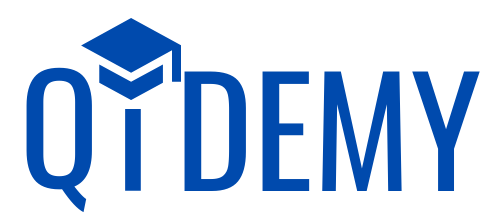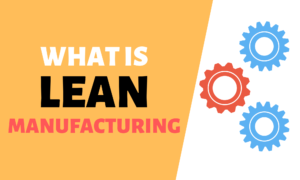Kaikaku is a Japanese term that means “radical change” or “revolutionary transformation.” In the context of lean manufacturing, Kaikaku refers to a sudden and radical change in a company’s production process, aimed at achieving significant improvements in productivity, quality, and profitability.
Kaikaku plays a crucial role in lean manufacturing by enabling companies to quickly identify and eliminate waste in their production processes, resulting in increased efficiency, reduced costs, and improved customer satisfaction. It also helps organizations to stay competitive in a rapidly changing business environment.
In this blog, we will explore the concept of Kaikaku in detail, including its history, methodology, benefits, and limitations.
We will also examine case studies of successful Kaikaku implementation in companies such as Toyota, Intel, and Amazon. Finally, we will discuss the challenges and limitations of Kaikaku and provide recommendations for organizations looking to implement this approach to lean manufacturing.
Table of Contents
History of Kaikaku
Kaikaku has its roots in the Japanese manufacturing industry, particularly in the Toyota Production System (TPS). Taiichi Ohno, the founder of TPS, was the first to introduce the concept of Kaikaku in the 1960s as a means of achieving rapid and radical improvements in production processes.
Key concepts of Kaikaku
There are several key concepts associated with Kaikaku, including:
- Radical Change: Kaikaku is a radical change that results in a significant improvement in the production process.
- Customer Focus: Kaikaku aims to improve customer satisfaction by delivering high-quality products or services at a lower cost.
- Continuous Improvement: Kaikaku is part of the continuous improvement process, which seeks to eliminate waste, reduce costs, and improve efficiency.
- Value Stream Mapping: Kaikaku uses value stream mapping to identify waste and inefficiencies in the production process.
- Lean Tools and Techniques: Kaikaku employs lean tools and techniques, such as 5S, Just-In-Time (JIT), and Total Productive Maintenance (TPM), to improve the production process.
- Employee Involvement: Kaikaku involves employees at all levels of the organization, encouraging them to identify and eliminate waste in their work processes.
Overall, Kaikaku is a customer-focused approach that seeks to achieve rapid and radical improvements in the production process by empowering employees, using lean tools and techniques, and focusing on continuous improvement.
Differences between Kaikaku and Kaizen
To Know more about differences in Kaizen and Kaikaku.Click Here
How to implement Kaikaku?
A. Steps involved in Kaikaku
The following are the general steps involved in implementing Kaikaku:
- Identify the Problem: The first step is to identify the problem or inefficiency in the production process that needs to be addressed.
- Formulate the Goal: Once the problem has been identified, the team must formulate a clear goal for the Kaikaku project.
- Conduct Value Stream Mapping: The team uses value stream mapping to identify waste and inefficiencies in the production process.
- Brainstorm Solutions: The team then generates ideas for solutions to the identified problems.
- Develop an Action Plan: The team develops an action plan for implementing the selected solutions.
- Implement the Solutions: The team implements the solutions identified in the action plan.
- Evaluate the Results: The team evaluates the results of the Kaikaku project to determine if the goal has been achieved.
B. Tools and Techniques used in Kaikaku
Kaikaku uses a variety of tools and techniques to identify waste and inefficiencies in the production process and implement solutions. Some of the common tools and techniques used in Kaikaku include:
- 5S: A workplace organization and standardization method that helps to eliminate waste and increase efficiency.
- Just-In-Time (JIT): A production method that aims to produce only what is needed, when it is needed, and in the required quantity.
- Total Productive Maintenance (TPM): A maintenance strategy that focuses on maximizing equipment efficiency and reducing downtime.
- Kanban: A visual system for managing production flow and inventory levels.
- Poka-Yoke: A mistake-proofing technique that helps to prevent errors and defects.
What are the Benefits of Kaikaku?
Kaikaku provides several benefits to organizations that implement it. The following are some of the key benefits:
A. Enhanced Productivity
Kaikaku helps organizations to identify and eliminate waste in the production process, resulting in increased productivity. By streamlining processes, organizations can produce more output in less time, leading to higher production rates and improved efficiency.
B. Improved Quality
Kaikaku focuses on reducing defects and errors in the production process, resulting in improved quality of products or services. By eliminating waste and improving process flow, organizations can reduce errors and defects, leading to higher-quality products and services.
C. Reduced Costs
Kaikaku helps organizations to reduce costs by eliminating waste, reducing rework and scrap, and improving process efficiency. By streamlining processes and reducing waste, organizations can reduce costs associated with production, such as labor, materials, and equipment.
D. Increased Customer Satisfaction
Kaikaku is customer-focused, aiming to improve customer satisfaction by delivering high-quality products or services at a lower cost. By improving quality and reducing costs, organizations can enhance customer satisfaction, resulting in increased customer loyalty and repeat business.
Overall, Kaikaku provides several benefits to organizations that implement it, including enhanced productivity, improved quality, reduced costs, and increased customer satisfaction. By focusing on continuous improvement and empowering employees, organizations can achieve radical and sustainable improvements in their production processes.
Case studies
A. Toyota Production System
One of the key metrics used to measure the effectiveness of TPS is the lead time, which is the time it takes to complete a process from start to finish. The following table shows the lead time reductions achieved by Toyota through the implementation of TPS:
| Process | Lead Time Before TPS | Lead Time After TPS | Lead Time Reduction |
| Engine assembly | 1.5 days | 4 hours | 91.7% |
| Chassis assembly | 2 days | 8 hours | 87.5% |
| Paint shop | 5 days | 1.5 days | 70% |
| Final inspection | 2 days | 1 hour | 95.8% |
As the table shows, TPS resulted in significant reductions in lead time across various processes, resulting in improved productivity and efficiency.
B. Intel Corporation
Intel Corporation used Kaikaku to improve its product development process, resulting in reduced lead times and increased market share. The following table shows the lead time reductions achieved by Intel through the implementation of Kaikaku:
| Process | Lead Time Before Kaikaku | Lead Time After Kaikaku | Lead Time Reduction |
| Microprocessor development | 18 months | 12 months | 33% |
| Chipset development | 15 months | 9 months | 40% |
| Platform development | 24 months | 18 months | 25% |
As the table shows, Kaikaku resulted in significant reductions in lead time across various processes, resulting in faster and more efficient product development.
C. Amazon
Amazon used Kaikaku to improve its supply chain and logistics processes, resulting in faster delivery times and improved customer satisfaction. The following table shows the improvements achieved by Amazon through the implementation of Kaikaku:
| Metric | Before Kaikaku | After Kaikaku | Improvement |
| Delivery time | 2 days | Less than 24 hours | 88% |
| Inventory turns | 3.5 times | 6.3 times | 80% |
| Shipping costs | $4.64 per unit | $2.94 per unit | 37% |
| Customer ratings | 4.5 stars | 4.8 stars | 6.7% |
As the table shows, Kaikaku resulted in significant improvements in delivery times, inventory turns, shipping costs, and customer satisfaction, resulting in increased sales and profitability.
Challenges and Limitations of Kaikaku
While Kaikaku has proven to be effective in improving productivity, quality, and cost reduction, its implementation is not without challenges and limitations. The following are some of the challenges and limitations of Kaikaku:
A. Resistance to Change
One of the biggest challenges in implementing Kaikaku is resistance to change. Employees may be resistant to changes in their work processes, which can hinder the implementation of Kaikaku. Overcoming this resistance requires strong leadership, effective communication, and a commitment to continuous improvement.
B. Lack of Knowledge and Expertise
Implementing Kaikaku requires knowledge and expertise in lean manufacturing principles, as well as the tools and techniques used in Kaikaku. Without this knowledge and expertise, the implementation of Kaikaku may be difficult and ineffective. Companies may need to invest in training and development programs to ensure that employees have the necessary knowledge and expertise to implement Kaikaku successfully.
C. Difficulties in Implementation
Implementing Kaikaku can be challenging and time-consuming. It requires a significant investment of resources, including time, money, and manpower. Moreover, Kaikaku may not be suitable for all companies or industries, and some companies may not have the resources to implement Kaikaku effectively.
Overall, while Kaikaku offers significant benefits to companies that implement it successfully, it is not without challenges and limitations. Companies need to be aware of these challenges and limitations and develop strategies to overcome them to ensure the successful implementation of Kaikaku.
Conclusion
In conclusion, Kaikaku is an essential methodology in Lean Manufacturing that has proven to be effective in improving productivity, quality, and cost reduction. Its history can be traced back to the Toyota Production System, which is a cornerstone of Lean Manufacturing.
Kaikaku involves a systematic approach to identify and eliminate waste, inefficiencies, and redundancies in work processes. It requires a significant investment of resources, including time, money, and manpower. However, the benefits of implementing Kaikaku are significant and include enhanced productivity, improved quality, reduced costs, and increased customer satisfaction.
Despite its benefits, Kaikaku is not without challenges and limitations. Resistance to change, lack of knowledge and expertise, and difficulties in implementation are some of the challenges that companies may face when implementing Kaikaku. Therefore, companies need to develop strategies to overcome these challenges to ensure the successful implementation of Kaikaku.
In conclusion, Kaikaku is an essential methodology that companies can use to improve their manufacturing processes continuously. By implementing Kaikaku successfully, companies can achieve significant improvements in their production processes, leading to improved efficiency, quality, and customer satisfaction.
FAQs
Here are some frequently asked questions (FAQs) about Kaikaku
What is the difference between Kaikaku and Kaizen?
Kaikaku refers to radical changes made to a system or process, while Kaizen refers to continuous improvement. Kaizen involves making small, incremental changes to improve a process, while Kaikaku involves making significant changes all at once.
How long does it take to implement Kaikaku?
The time it takes to implement Kaikaku depends on the complexity of the system or process being changed. The implementation of Kaikaku can take anywhere from a few weeks to several months, depending on the scope and scale of the changes.
What are some common tools and techniques used in Kaikaku?
Some common tools and techniques used in Kaikaku include value stream mapping, flow analysis, process mapping, 5S, and just-in-time (JIT) production.
Can Kaikaku be applied to non-manufacturing industries?
Yes, Kaikaku can be applied to non-manufacturing industries such as healthcare, finance, and service industries. The principles of Kaikaku can be adapted to suit the specific needs and requirements of different industries.
How can companies overcome resistance to change when implementing Kaikaku?
Companies can overcome resistance to change by involving employees in the Kaikaku process and providing them with the necessary training and support to adapt to the changes. Effective communication and strong leadership can also help overcome resistance to change.




